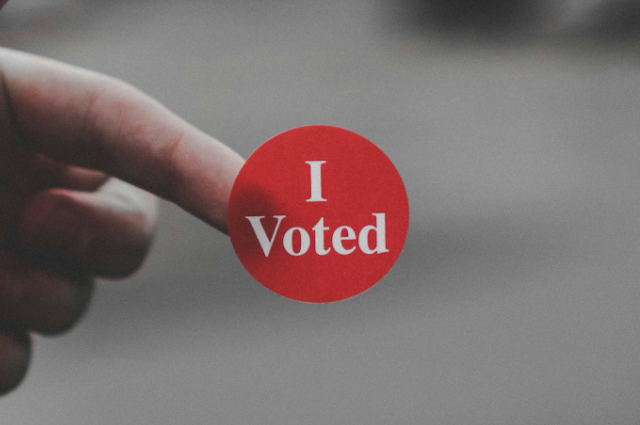
Photo by Parker Johnson on Unsplash
This act is often glorified as the cornerstone of democracy: the sacred right through which citizens exercise the right to chart the future for their nations. It assumes tremendous significance in the world's largest democracy India with millions coming out to exercise their voting rights in this spectacular spectacle that is, at the same time, inspiring and complicated. However, amidst this grandeur of the democratic exercise, a long-standing question perturbs: how reliable is that which records and counts those votes? In specific language, can we repose our irreproachable confidence in those so-debated EVMs, that high-tech innovations which have been transforming the very form in which polls are being undertaken?
The Emergence of EVMs: Technological Foresight or Blind Step?
Since their launch in the early 2000s, EVMs have been heralded as the panacea for the logistical nightmares of conducting elections across vast and varied areas like India. Machines will bring efficiency, and accuracy, and reduce human error, replacing the laborious traditional process of manual counting for votes. But, like all other technological progressions, this shift from paper ballots to electronic devices has not been free of scepticism and controversy.
The very features that make EVMs efficient, speed and automation contribute to their opacity. Where the tactile, visual mark of a paper ballot serves as a palpable act to mark a choice, this is replaced by a leap of faith in the case of an EVM. The voter clicks a button, hoping that his or her vote is captured and counted correctly, though the voter has no way of knowing this directly. It's a silent, almost invisible transaction that makes people doubt and grow suspicious.
The VVPAT: Band-Aid Over an Open Wound
In response to increasing protests over transparency, the Election Commission of India introduced the Voter Verifiable Paper Audit Trail (VVPAT) system. VVPAT offers a physical paper slip that allows voters to verify their choice before it is safely stored for potential audits. On the surface, this seemed like a step toward greater accountability—a safeguard against possible tampering or errors in electronic counting.
But this also has not proven to be an infallible measure. In some of the recent elections, differences have occurred between the count shown electronically and the paper slips drawn out from the VVPAT machines. Hence, a dark shadow clouds the process, making this paradoxical, wherein the method that was envisioned to reassure sometimes has bred further incredulity. The question here is-if the paper trail meant to be the last judge of accuracy and reliability cannot match the count displayed in the electronic media, which then do we accept?
The Specter of Tampering and Malfunction
Continuous claims of EVM tampering do not help in throwing more light on the confusion. The losing parties point to the machine and say the machine manipulated to produce some of the results rather than expressing the people's desire. Most claims have no basis, but they do reflect one important fact: perception matters in democracy and even the suspicion of manipulation rubs mud on public confidence in the electoral process.
However, the apprehensions aren't entirely baseless. For one, EVMs, like any other electronic device, are prone to technical snags or hacking attacks. Given the fact that cyber attacks have decimated banks, corporations, and even governments, it's not far-fetched to assume that voting machines too may not be an exception. The Election Commission has at various times publicly declared the machines to be tamper-proof. Assurances alone would not calm the techie and increasingly sceptical electorate.
Transparency vs. Trust: Democracy's Dilemma
This EVM debate highlights a more fundamental tension in democratic systems: transparency versus trust. Democracy relies on the trust of its citizens—that their votes are counted, that the system is fair, and that their voices are heard. When that trust is eroded, democracy itself is at risk.
Transparency, therefore, is neither just a bureaucratic ritual but a democratic necessity. Citizens have to see and understand how the votes have been counted; they require machinery that will enable verification of whether or not the process was correct. If such transparency did not exist, then the trust would be blind faith—a fragile and easily fractured bond.
The Road Ahead: Reform and Vigilance
So, what is in the offing for India? The future is in technology and institutional reforms. Technology innovation would need to address the three dimensions of security, transparency, and verifiability. This could include testing of EVMs many times more than now; an independent audit of election results; and a wholly new system that is much more complex yet brings out all the best qualities of electronic as well as paper-based systems.
Yet the responsibility civic engagement and alertness also have to assume is also of crucial importance. In the hands of citizens, civil society organisations and the media lies the responsibility to question and scrutinise the electoral process as a way of holding those institutions responsible and demanding changes wherever necessary. Democracy never is a passive affair, and therefore it always requires active input and constant watchfulness.
Conclusion: The Illusion and the Reality
Voting is a right but a duty and responsibility that epitomizes the people's choice in this great parliament of democracy. The simple question of how this whole machinery is managed brings the democratic path to a crossroads. The journey with electronic voting machines in India has proved one of the trickiest balances to strike between technological revolutions with democratic credentials.
As citizens go to vote, they must do that with hope and caution- hope that their votes might be counted correctly and honestly and caution in realizing the fact that no system of human making is infallible. The illusion of a perfect system must yield to that of continuous improvement because "democracy is not a fixed ideal but an ever-evolving practice." It dances in the illusion and reality. Vigilance is the price of liberty; transparency is the safeguard.
